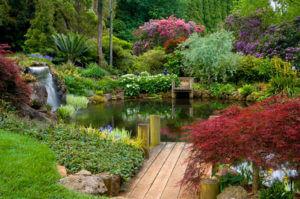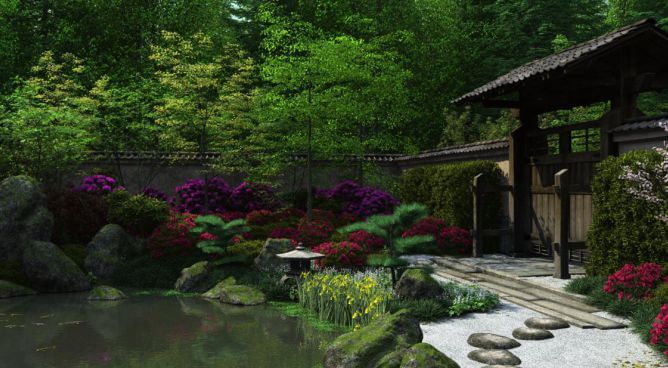
Many individuals are drawn to the simple beauty and unmistakable feeling of calmness in Japanese gardens. Rich in culture and authenticity, these gardens are a favorite amongst the green crowd. It’s no easy task trying to duplicate but with the right tips and tools, it can be done. The inspiration for the plant color and choices all come from the country’s native forests and soaring mountains. The most common colors are deep greens, earthy browns, and dark stones. These colors help to bring out the subtle accent of red that is displayed on a bridge. Further replicating the landscape, mounds to symbolize the hills and depressions for valleys will give your garden the authentic touch.
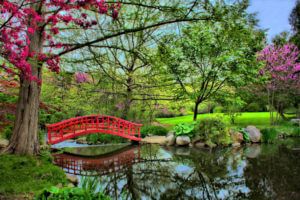
Most Japanese gardens make use of the natural materials like large steppingstones, bamboo, hardwoods, gravel and sand. Concrete material is used for the some of the modern gardens. To promote a good vibe and achieve peace, Japanese gardens are structured in such a way to be asymmetry. The pathways and planting beds are laid out to promote balance in the landscape. For example, if a tree is placed on side of the pathway, a large boulder or stepping stones would be placed on the other side to promote a balanced form.
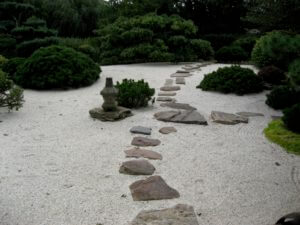
Traditionally the garden would hold a teahouse, a sacred place kept for ceremonies. Even though you wouldn’t use it for an occasion, a teahouse gives you an outdoor room that is designed for reflection and peace. An important element that is paired with teahouses is water basins. Usually used for guests to clean themselves before entering the teahouse, a basin would provide an easy way of introducing calmness. Stones can be used to surround the arrangement, representing different elements. The simple touch of adding water in the garden is an important representation to the Japanese culture. It has a soothing effect on a landscape design. To get the look in your own backyard, dig a shallow depression to act as a dry streambed and fill with dark gravel. Nestle rounded fieldstones along the banks and fill it in with ferns.
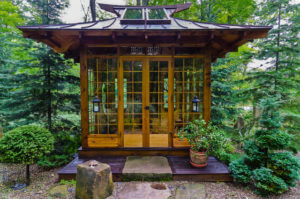
Large boulders or stones can be used to represent mountains in the landscape. Boulders can be partially buried and have plants surrounding the base. Different sized boulders can also make the garden feel unique. Depending on the size of the stones, you can create a walkway throughout your garden. These paths can crisscross streambeds and lead you around the garden, guiding for a meditative and peaceful walk. The path can be made up of stepping stones incorporated in the ground or even a sandy path, bordered with small stones.
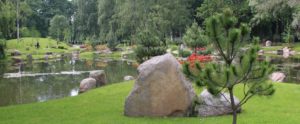
Everyone knows the most important thing you must have in a Japanese garden is a Zen garden. The most iconic element of self-meditation, these dry landscapes are composed of rocks, moss and small trees. The fine gravel or pale sand spread to cover the ground that is raked into ripples. This soothing stylized landscape can be satisfying to gaze upon.
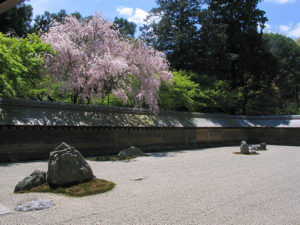
A big key to making a Japanese garden is also in the details of the plants. There are certain plants to put in the garden if you want to make it authentic. Japanese maples are delicate and have been cherished for years. Though small, they can make the garden pop with its leaf colors, ranging from chartreuse to plum. Moss gardens blanketing the landscape are another element to have. Moss thrives only in regularly moist and comfortable conditions with dim sunlight. Keeping the area damp with regular watering is all that’s needed, making it simple to take care of. Associated with birth and renewal, spring gardens are particularly revered in Japanese gardens. The spring theme mostly consists of bright, vivid green plants, flowering cherries, and spring blossoms. The plants and flowers welcome in the season of spring with their glowing colors.
